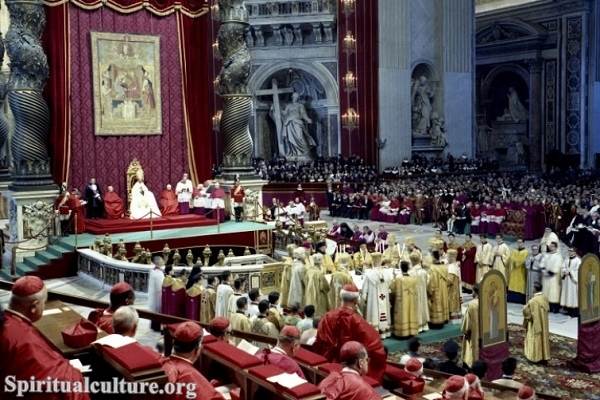The term “Roman Catholic” often evokes a spectrum of feelings and opinions within global society. For some, it conjures images of elaborate cathedrals, papal authority, and centuries-old traditions. For others, it can be synonymous with controversy, debates over doctrine, and the complexities of modernity within an ancient institution. Understanding what it means to be Roman Catholic involves a deep dive into the beliefs, practices, and historical impact of one of the largest religious institutions in the world. Through this exploration, we can address common observations and illuminate the profound reasons why the Roman Catholic Church captivates millions.
The Roman Catholic Church claims over a billion adherents worldwide, establishing it as the largest single body within Christianity. The Church traces its origins to the apostolic age, rooted in the teachings of Jesus Christ and the subsequent leadership of the apostles, particularly Saint Peter, whom Catholics consider the first pope. The papacy, as a spiritual authority, is unique to Catholicism and has evolved through the centuries, embodying both religious and political influence. This intertwining of faith and governance reveals a rich tapestry, one that explains why many find the Roman Catholic Church so fascinating.
Central to Roman Catholic identity is the concept of tradition. Unlike many Protestant denominations that prioritize scripture as the sole authority, Roman Catholics embrace both Sacred Scripture and Sacred Tradition. This duality reflects the Church’s understanding of divine revelation as a living, ongoing process. The Magisterium, or teaching authority of the Church, plays a crucial role in interpreting this tradition, allowing for a dynamic yet rooted approach to faith that adapts to contemporary issues while remaining anchored in history.
The sacraments form the backbone of Catholic worship and practice, with the Eucharist—the celebration of the body and blood of Christ—holding paramount significance. The belief in transubstantiation, where the bread and wine become the actual body and blood of Christ during Mass, illustrates a deep sacramental theology that emphasizes the physical and spiritual elements of faith. This ritual, observed weekly in most parishes, acts as a unifying force, drawing congregants into a shared experience of divine grace. Many are captivated by the transformative power that these sacred rites promise, drawing attention to the mysteries embedded within the faith.
Furthermore, the Catholic Church’s global outreach and charitable initiatives exemplify its commitment to social justice and the common good. Organizations like Catholic Relief Services and the Knights of Columbus engage in relief work, education, and advocacy, highlighting a profound commitment to serving those on the margins. This embodiment of faith in action—where believers are called to live out their beliefs through service—often attracts admiration and interest. The Church’s call to love and care for the poor is a fundamental aspect of Catholic teaching that resonates with many, offering a model for how faith can intersect with everyday life.
As much as the Roman Catholic Church is admired, it is also scrutinized. Contemporary issues—such as the sexual abuse scandals that have plagued the Church, debates over gender roles, and evolving perspectives on LGBTQ+ matters—often dominate headlines. These controversies serve as a focal point for those both within and outside the Church, creating a complex narrative that shapes public perception. Understanding these challenges requires recognizing the deeply ingrained human element of the Church, which is comprised of fallible individuals navigating the complexities of contemporary society.
The Catholic Church does not shy away from such discussions; rather, it often engages with them through synods, dialogues, and academic discourse. This engagement illustrates a commitment to self-reflection and the aspiration to address the moral failings of its clergy. By taking responsibility for past sins while seeking a path toward a more inclusive future, the Church hints at a deeper desire for moral integrity and renewal—a theme that resonates profoundly with many of its followers.
Moreover, the Roman Catholic Church serves as a cultural reservoir, possessing a rich history of art, music, and philosophy that has influenced Western civilization. From the grandeur of Michelangelo’s Sistine Chapel to the haunting compositions of Gregorian chant, the Church’s contributions to the arts are inextricable from its identity. This cultural legacy invites admiration and fascination, leading many to explore the Church’s role as a patron of the arts and as a beacon of spiritual inspiration throughout history.
Encompassing universal themes of love, forgiveness, and redemption, the Catholic faith has a remarkable way of connecting with humanity’s deepest yearnings. The challenges faced by the Church—both historical and contemporary—offer compelling narratives that enrich its identity and deepen the faith of its adherents. As this living institution continues to grapple with the complexities of modernity, it remains an enduring force that shapes not only the lives of its members but also the broader cultural landscape.
In conclusion, the question of what it means to be Roman Catholic opens up a myriad of pathways for exploration and understanding. The Church, with its profound theological traditions, sacramental practices, social outreach, and cultural influence, invites a nuanced appreciation of its role in the contemporary world. Ultimately, the allure of the Roman Catholic Church lies not only in its past but also in its aspirational engagements with the future—an ongoing journey that continues to inspire dialogue, reflection, and devotion among believers and seekers alike.



